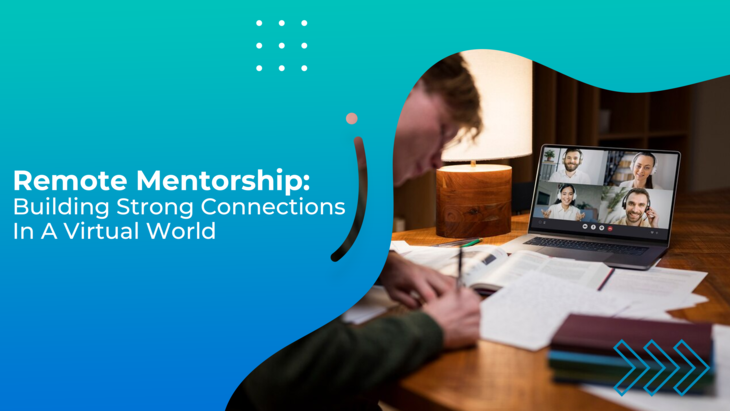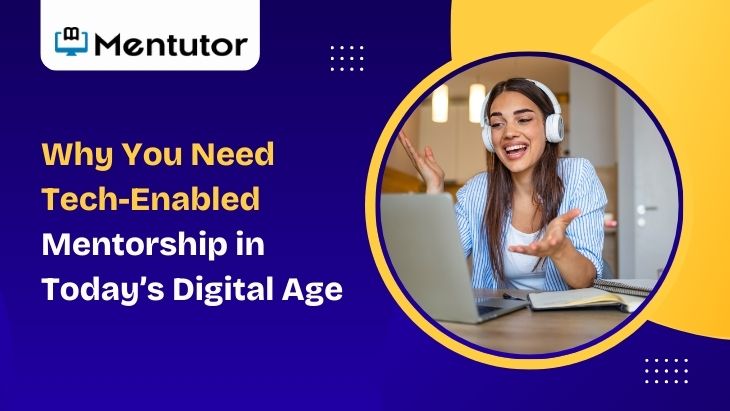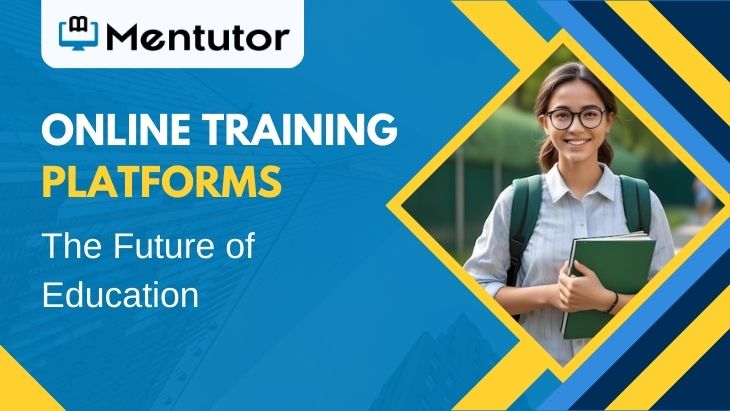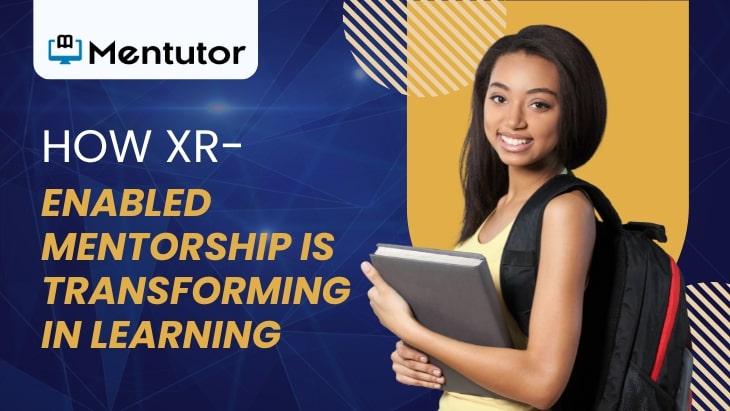Work environment is radically changing very quickly. With the growing popularity of telecommuting and a global workforce shifting in this direction, conventional physical mentor-mentee relationships are not the ones that are used to anymore. Virtual mentoring has become a modern and effective alternative which is not limited by the geographical location and presents the application with quite a few benefits. Yet the way that we are making us a part of this virtual community is based on specific strategy. This post describes the world of remote mentoring, reflecting on its merits, disadvantages, and methods for maintaining successful mentor and mentee relationships online.
Why Remote Mentoring Matters
Remote mentoring offers a plethora of advantages for both mentors and mentees. Here are some key reasons why it matters:
Increased Accessibility: Virtual possibilities create geographical borders and make it possible for the mentees to connect mentors with certain expertise or experience that they actually want, notwithstanding the fact of the place. This mole increases the size of the pool of mentors to choose from and also unlocks new doors of knowledge and viewpoints to explore.
Flexibility and Convenience: Remote mentoring helps with planning issues since schedules can be easily maintained. Setting up a video conference is not an issue for either one of the busy parties as this can be done at any time convenient. Moreover, these virtual devices support asynchronous communication via emails, discussion forum, collaborative documents, hence in addition to the class activities, make the continuous feedback and exchange between instructors and students possible.
Diversity and Inclusion: Virtual mentoring programs can include people with disabilities and those who find meet with barriers at the workplace. Virtual platforms can offer a space that combines the convenience and the access to an atmosphere that encourages dialogue and training.
Cost-Effectiveness: Thanks to virtual mentoring, you will not have to spend money on long journeys and logistics. This can be an essential advantage for groups with limited resources or teams which disperse geographically.
Focus and Accountability: The organized character of the virtual meetings can be used to increase the concentration and the responsibility of the attendants. Websites, emails, and social networks can be applied to follow through, share resources, and define appropriate objectives for mentor mentee relationships.
Challenges and Considerations for Building Strong Connections
While remote mentoring offers numerous advantages, it also presents certain challenges:
- Building Rapport: Establishing a strong personal connection can be more difficult in a virtual environment. The lack of non-verbal cues and face-to-face interaction can make it harder to build rapport and trust.
- Maintaining Engagement: Virtual interactions can sometimes lack the energy and engagement of in-person meetings. Mentees may find it easier to become distracted during online sessions.
- Overcoming Technological Barriers: Technical difficulties can disrupt communication and hinder the flow of the mentoring relationship. Both mentors and mentees need to be comfortable with the chosen platform and have access to reliable technology.
- Time Zone Differences: Coordinating schedules can be challenging when mentors and mentees reside in different time zones. Finding common ground and setting expectations around communication frequency is crucial.
Strategies for Building Strong Remote Mentoring Relationships:
While remote mentoring offers numerous advantages, it also presents certain challenges:
Building Rapport: It is less easy to make a clear and strong personal connection in a virtual environment than in a real environment. When interacting via a medium that lacks physical cues like facial expressions and body language, it arguably gets harder to create close emotional ties with the other person.
Maintaining Engagement: The online communication and in-person engagement could sometimes turn out to be less engaging and energetic as compared to face to face interaction. Mentees may more likely be distracted during an online session. There may be more opportunities to get distracted.
Overcoming Technological Barriers: Technical inconveniences can occasionally interfere with communication and impede mentoring ties to flow sometimes. Mentors as well as the mentees need to be at ease with the platform and should have use of the latest technology and good access to it.
Time Zone Differences: While determining the meeting times is a bit tricky when mentor and mentee are from different time zones, this addition has been beneficial towards the success of this program. Identifying the common ground and defining the form and boundaries for the communication within specific parameters play an essential role.
Strategies for Building Strong Remote Mentoring Relationships
Despite these challenges, there are effective strategies to cultivate strong connections in a virtual mentoring relationship:
Intentional Matchmaking: An appropriate guidance of mentor and mentee, however, based on the shared interests, goals, and communication medium could be the pillar of success. Programs should set aside appropriate time for analysis of the needs and behavioral patterns of the bed partner to arrive at the congenial pairing.
Structured Onboarding: Carry out an organized enrollment process where there is just familiarizing the mentor and mentee with the program, virtual platform, expectations, and communication procedures. Doing this would allow starting the relationships based on the understanding of the persons.
Establishing Ground Rules: Certain communication norms such as frequency, type of contact, and the preferred meeting times should be established and mutually accepted. Setting expectations a priori eliminates the risk of misconceptions, and, what's more, facilitates the interaction to become a dialogue rather than a monologue.
Active Communication: Regular and, most of all, open communication is an essential part of my approach. Alongside mentoring meetings, employ a combination of video calls, emails, chat sessions and any other one on one communication method for ongoing dialogue and feedback.
Building Trust and Rapport: Commit time for understanding each other at a level where you are human. Share professional goals, personal values, and desired means of work. Generate open-minded and frank communication as a trust-building mechanism. This will create a safe environment for learning.
Utilizing Technology Effectively: Take a chance on using virtual solutions. Use sharing screens for the typical presentations and demonstrations rather. Make use of collaborative platforms where there is document sharing and goal tracking:. Take advantage of online resources and relevant materials in order to enrich the learners' experience.
Creating a Safe Space: Develop a virtual realm that mentees will feel safe getting their questions answered, doubts expressed and candid feedback sought. Mentors should not only listen actively, but also provide honest feedback to the mentees, and at the same time invite mentees to put across their own opinions.
Goal Setting and Progress Tracking: Establish clearly defined, measurable objectives through which the mentorship journey will flow. Work collaboratively to define milestones and track the progress of things all through the program. Ensure that periodic reintroduction of goals and adjustments are made in connection with up-to-date information for the mentee to continue to grow.
Celebrating Successes: It is important to give importance and celebrate achievements and milestones in the mentoring process. This in turn builds on the positive behaviour, helps to motivate the mentee, and brings the two sides closer.
Social Interaction and Networking: On the one hand, video calling is a must but you are encouraged to also add virtual social events and educational group sessions. This way mentees will build a community as well as get to know other individuals who are also going through a similar experience. Induce engagement in online discussion forums and bulletin boards associated with mentee's industry.
Mentorship Training: By equipping mentors with communicating techniques, goal setting strategies, and the mastery of a virtual meeting environment, the mentoring process can be taken to a higher level.
Continuous Feedback and Evaluation: Engage in a feedback loop both with the mentors and the mentees on the regular basis to measure the program’s efficiency and recognize the areas in need of improvement. This feedback may be used to accordingly tune how the program structure, communication strategies, and unending dynamics of the participants are managed so as to ensure that the program is successful.
Building a Supportive Culture: Organizations are encouraged to achieve mentorship-cultivating cultures through recognition and awards for successful mentorship relationships. The most powerful example is showing successful strategies and testimonials that help to motivate participation and inspire others to seek out or offer mentorship programs.
Conclusion
Mentorship remotely has become an essential tool in the personal and professional development of people as virtual work has taken a strong grip on the world. Technological applications will definitely bring mentors and mentees together. Getting in touch will be easy then. Means of communication will be set up. Finally, the connection between the two will be very strong. Distance will not be a barrier. These links can provide workers with power, lightning speed learning, and contribute to worker's potential increase and accomplishment chances.
Beyond the Basics:
This article has constituted a consequential foundation building for strong remote mentorship relationship development. Here are some additional considerations to explore:Here are some additional considerations to explore:
Micro-Mentoring: Analyze micro-mentoring that is reduced to short one-session counselling sessions which mentors and mentees encounter. Such a technique would appeal very well to those who are usually pressed for time and to give the people who are in need either quick suggestions or better targeted support.
Mentorship Circles: Including mentorship circles where one or two mentors are together connected to a group of mentees could be bothered. This form allows people to interact with one another, see various views of a topic, and make sure to help them feel connected.
Reverse Mentoring: Examine the issue of reverse mentoring, which is typically an option for employees who have expertise in some field doing the mentoring of senior colleagues. This consequently provides an environment that is conducive to learning consistently and exchange of knowledge occurs between the generations.
Collaborating for remote mentorship may ask for not only a backing from the organization but also the commitment from individuals. The organizations that are going to succeed in virtual mentoring programs are those which recognize the benefits of the virtual world and implement the strategies that promote the environment that takes full advantage of the opportunities offered by the virtual world to enable growth that benefits individuals and organizations as well.






Leave a reply